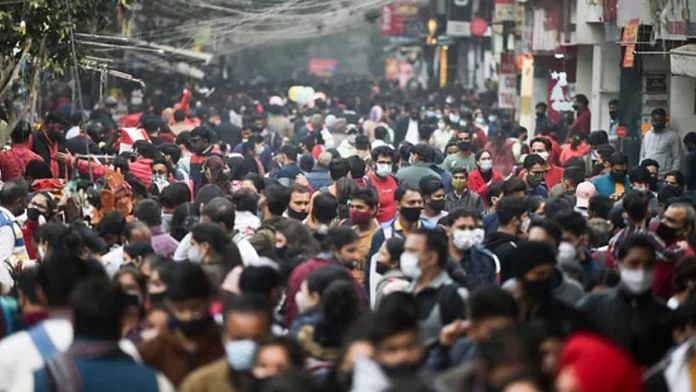New Delhi: Work has started in Nirman Bhawan — the government building housing, among others, the Ministry of Health and Family Welfare — on the National Public Health Observatory (NPHO).
Designed as a central control unit with corresponding state units, the NPHO will act as a control room during public health emergencies. More importantly, during times of “peace”, it will work as an integration unit for public health programmes.
Using the 14-digit Ayushman Bharat Health Account (ABHA) number — commonly known as the digital health ID — the NPHO will ensure that different government health programmes, such as maternal and child health programmes and the TB control programme, “talk” to each other instead of working in silos, as they currently do.
The experiences of Covid and the health ministry control room that helped coordinate pandemic management efforts over the past two years have been used in planning the NPHO.
The long-term idea, however, is to integrate even non-health programmes such as the Pradhan Mantri Ujjwala Yojana into the system, so that an outbreak of respiratory diseases in one particular district may be immediately assessed against the benchmark of Ujjwala coverage and uptake of gas cylinders under the scheme, or against the pollution parameters of that area, said senior health ministry officials.
In Phase 0, CoWIN, INSACOG, Aarogya Setu, the COVID-19 Emergency Response and Health Systems Preparedness Package and others, have been integrated into the system. In the next phase, the programmes that have been selected for integration are those dealing with non-communicable diseases, TB, health and wellness centres, reproductive and child health (RCH), and those run by the National Health Authority.
The work is being done by the Centre for Health Informatics in the health ministry along with external consultants.
Also read: What is digital health ID? All about the 14-digit number and privacy concerns around it
Eight-pronged health-readiness index
The NPHO will collate and integrate data under eight broad heads — population profile, healthcare infrastructure, healthcare human resources, performance of public health programmes, healthcare financing and coverage, digital health, disease burden and surveillance, and lastly, over a longer time frame, non-healthcare social wellbeing indicators such as pollution programmes, cleanliness and Ujjwala Yojana.
A senior health official told ThePrint: “Right now, the way programmes function is a little disjointed. RCH does not know whether a pregnant woman has tuberculosis or anaemia, say, and needs extra care. But now, with the help of ABHA, we can monitor all of that centrally. If there is a district which has an infectious disease outbreak, the dashboard will immediately show us the availability of health infrastructure and manpower in that area and whether it needs to be supplemented.”
“For each public programme, we are developing key performance indicators against which it will be assessed. There will be similar observatories in states too and all of them will function in tandem,” the official added.
There is a requirement of consent for ABHA but a large number of Indians who used their Aadhaar cards for Covid vaccination have already been allocated an ABHA — many without their knowledge.
The Integrated Disease Surveillance Programme (IDSP) has a similar set-up with central, state and district units coordinating the management of infectious diseases, and this was the mainstay of Covid management.
However, the official explained, the NPHO will go beyond mere disease surveillance to become a full-fledged control room like the US’s Emergency Operations Center at the Centres for Disease Control and Prevention (CDC), Atlanta. And the NPHO will function not just in emergencies but also at other times to strengthen the overall implementation of healthcare programmes in the country.
Key performance indicators (KPIs) for some health programmes have already been finalised while others are in progress. Programmes would be assessed against these and modified accordingly. “For example, for the TB programme, KPIs could simply be the number of people who have recovered, or are currently under treatment and have been supplied with medicines,” the official said.
(Edited by Nida Fatima Siddiqui)
Also read: Used Aadhaar for Covid vaccine? Modi govt created your digital health ID without asking you



